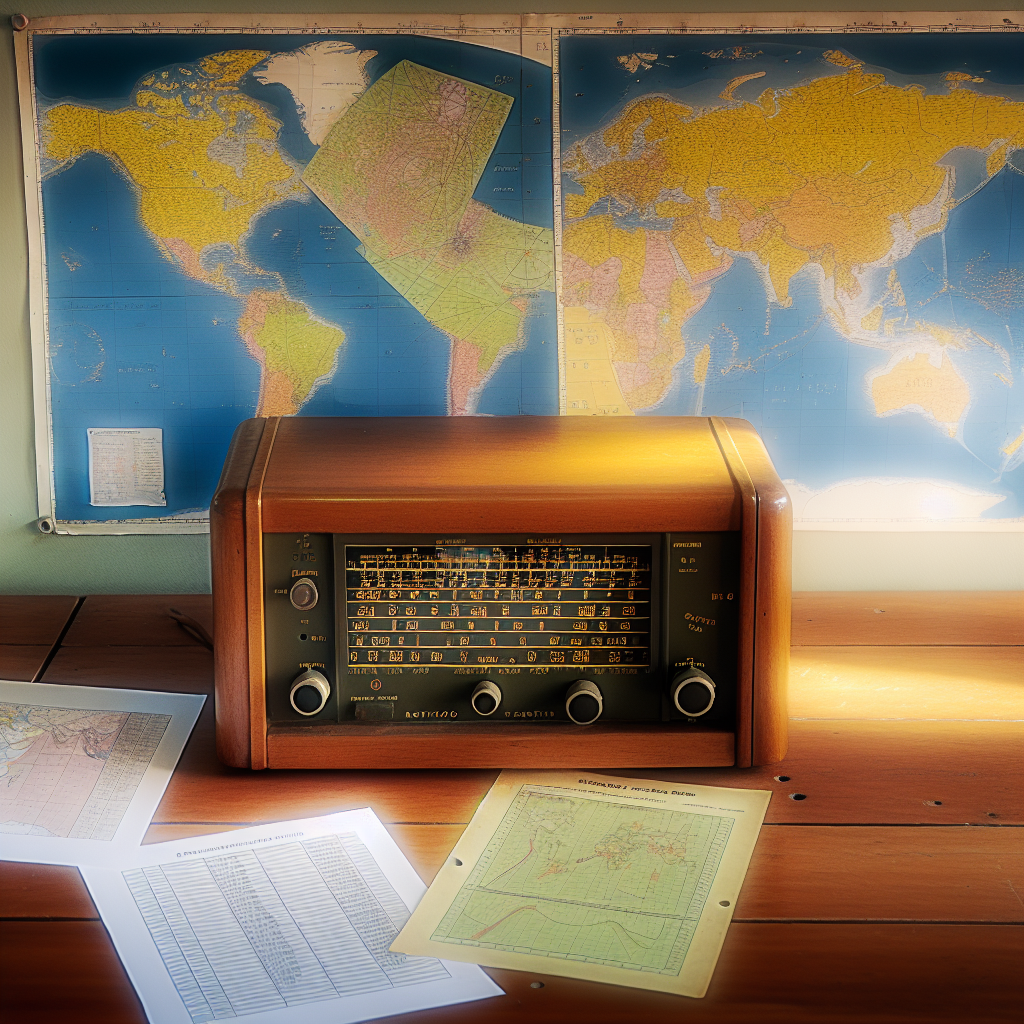Shortwave radio offers an enticing realm of global communication, stretching across international borders and cultures. From the crucial role of HF radio and its amateur bands to the intricacies of radio propagation and antenna tuning, this domain unveils an exciting exploration into how radio waves cross vast distances and connect people worldwide.
Understanding the Basics of Shortwave and HF Radio
Shortwave and high-frequency (HF) radios have transformed global communication since their inception. These radios operate within the HF band (3 MHz to 30 MHz), utilizing unique radio wave properties that enable long-distance transmission. As the waves can reflect off the ionosphere, they often surpass geographical barriers, allowing listeners to receive broadcasts from around the world. Shortwave radios are celebrated for their versatility, offering access to international news, emergency services, and communication for remote rural areas. The emergence of portable shortwave radios, such as the Grundig and Tecsun models, has made this technology accessible, facilitating the popular hobby of shortwave listening and DXing, where enthusiasts scour frequencies for distant stations.
Diving Into Frequency Bands and AM Broadcasting
Diving into the intricate hierarchy of radio frequency bands reveals the vital role that shortwave (HF) and amateur radios play in global communication. Shortwave frequencies ranging from 3 to 30 MHz are uniquely suited for long-distance transmission, utilizing skywave propagation to reach far-off destinations. Amplitude Modulation (AM) broadcasting, the primary method for transmitting audio, revolutionized radio communication by enabling a simple approach to reach millions. Historically, AM marked the transition from experimental radio to mainstream broadcasts, fostering an era of information exchange that spanned continents and cultures. The development of portable shortwave radios further democratized access to international news and emergency communication, vital for disaster preparedness and rural communication, making global connectivity more achievable.
The Art of Antenna Tuning and Signal Reception
Antenna tuning is a crucial aspect of maximizing shortwave radio performance, directly impacting signal reception quality. Proper tuning ensures that the radio’s antenna is resonant at the desired frequency, which is essential for efficient radio wave propagation. Different terrains and atmospheric conditions profoundly influence radio signals. For instance, during the day, signals may become absorbed by the ionosphere, while at night, they can reflect back to Earth, enhancing reception.
For effective shortwave listening, enthusiasts often employ antennas tailored for specific bands. Portable options like the *Tecsun PL-880* and vintage models such as the *Grundig radio* can perform admirably with a well-tuned antenna. Signal reception greatly varies depending on the structure and placement of the antenna, with height and orientation affecting performance. Additionally, factors like atmospheric noise and local interference must be considered, making the art of antenna tuning not only a technical skill but also a nuanced practice involving experimentation and adjustment.
From Hobby to Necessity: Amateur and Survival Radio
Amateur radio, or ham radio, serves as a vital resource for connectivity, particularly in rural areas where traditional communication infrastructure may falter. Operating within the amateur radio bands, enthusiasts engage in a cultural exchange, sharing knowledge, experiences, and technical skills, enabling a worldwide community. In emergencies, ham radio operators become crucial lifelines, providing reliable communication during disasters when conventional networks fail. They stand ready, equipped with portable shortwave radios and effective antenna systems, enhancing signal reception and propagation. This proactive stance in disaster preparedness transforms a hobby into an indispensable tool for survival, ensuring that no voice is left unheard, regardless of circumstances.
Contemporary Uses of Shortwave: DXing and Global Broadcasts
Shortwave radio continues to play a crucial role in connecting the world, especially for enthusiasts engaged in DXing—an exhilarating hobby of seeking out distant signals. High-frequency (HF) bands enable listeners to capture broadcasts from across the globe, including international news radio broadcasts that provide insights into world events. Analog shortwave radios like the **Tecsun PL-880** and **Sony ICF-SW7600** remain popular for their simplicity and reliability, while digital shortwave receivers and SDR shortwave technology enhance signal fidelity. Additionally, shortwave effectively serves as emergency communication during disasters, maintaining vital connections when traditional networks fail, making it an invaluable resource for both hobbyists and emergency responders.
Food for Thought
Embarking on the world of shortwave radio unveils the intricacies of human communication. Ranging from amateur enthusiasts to survivalists, radio has steadfastly bridged gaps through waves and frequencies, confirming its enduring relevance.

Leave a Reply
You must be logged in to post a comment.